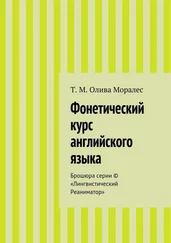columns (I — "for", II — "against"):
A new issue in aesthetic education today has to do with the choice of art examples to use in the classroom, specifically, whether
they should be restricted to recognized works of fine art or allowed to include such art forms as posters, album covers, billboards, and
particularly cinema and television.
Since the popular arts are a reflection and product of popular culture, exploring the popular culture should be a valid method of
inquiry. Popular arts are already a part of the children's lives and they enable the teacher to "start where the kids are". Further, they
facilitate the responses the children are already having with their preferred art forms rather than imposing adult middle class stan-
dards on them. We know also that art which students encounter in schools — the official or high art embodied in the official curricu -
lum — stands in an adversary relation to the media of popular entertainment. A critical analysis of the forms reflected in popular art is
imperative if we want to elicit meaningful dialogue about art.
Not all writers in art education have taken a positive position in regard to the popular arts. An opinion exists that fine art objects
are the only objects with the power to impart a markedly aesthetic aspect to human experience. Certain scholars "refuse to cheapen
art's magnificent and supreme excellence by comparing it to comic strips and other essentially vulgar commodities", claiming that
popular culture was the result of the public's inability to appreciate high art. Even those who recognize popular arts as art forms sug-
gest that the schools should go beyond them, because "serious art" makes more demands on the viewer.
Some art educators argue that concepts of fine art and popular art are relative and that the distinction between the two is slight if
not illusory. What we see in art museums and art galleries includes a lot of different things from all over the world, from cultures and
periods of time in which the concept of art, as we know it, did not exist. In their original contexts, such objects often served a variety
of functions, such as magical, ritualistic, narrative, or utilitarian but almost never aesthetic.
It is well known that many of the things we regard so highly today, such as Gothic cathedrals, El Grecos, Rembrandts, Goyas or
Cezannes, were ignored or scorned at different periods of time. Many things we ignore or scorn today, such as the work of the French
or Royal Academies in the 19th century, were at one time highly regarded. A work's reputation can be affected precipitously by the
accident of reattribution. A highly regarded Rembrandt, subsequently discovered to be not by Rembrandt drops in value immediately.
The same thing can happen in reverse. Finally, there are cases in which objects have lost not only their monetary and intrinsic value,
but also their status as art objects because they are fakes
18. Discuss the text in pairs. One partner will take the optimistic view and insist that popular arts should be included in the art curriculum. The
other will defend the opposite point of view.
Consider the following
F o r :
responsive to the forms of art which the teacher wishes to
1. The differences between popular and fine art are often
introduce.
matters of classification.
2. Popular art facilitates the aesthetic experience and therefore
A g a i n s t :
is appropriate for study in the field of art education.
1. Fine arts in each epoch supplied the models from which the
3.The content of the popular arts is of relevance to the
rules and principles were derived.
students and, through art criticism, can lead to a more
penetrating analysis of these and other art forms.
2. Fine arts are more noble, more worthy than all the other
opportunities available for visual aesthetic experience
4.The popular arts allow students to talk about
around us.
emotionally meaningful experiences.
3.Tastes should be developed through images of high artistic
5.They can aid the student's understanding of his culture as
culture, whereas works of popular culture as a rule meet
well as the cultures of other peoples.
consumer's tastes.
6.Once the teacher is able to establish a trusting relationship
4.Excellent, or fine art is better than poor art for providing
and a rapport with his students, the students might be more
students with a strong personal and cultural awareness.
5.A lot of popular art is debased and meretricious.
7.The habit of looking at good pictures is in itself a means by
which taste can be formed.
6.We have no right to "condemn" students to the easily
comprehensible forms of popular art. Any student can
develop an appreciation of the fine arts.
19. Role-Playing.
The Thing They Need
S i t u a t i o n : A group of students from a teacher training institute now on school practice and their instructor are discussing
what sort of social event to organize for the pupils of form 9 "A". In the course of the discussion opinions differ. You must decide
whose arguments sound more convincing.
C h a r a c t e r s :
1. Anna K., aged 23, is fond of pictorial art and suggests visiting the town's art gallery where the works of M.Vrubel are on
display at present ("Pan", "The Swan Princess", "Seated Demon" among them). The harmonious combination of the fantastic and the
real, the gorgeous colour schemes are sure to appeal to the pupils of form 9 "A". What they want is something noble and worthy, an
uplifting experience.
2. Victor M., aged 25, does not share Ann's enthusiasm for classical art. He has nothing against it personally but thinks that teen-
agers need a different kind of artistic experience, something that they can possibly share in. He wants to take the pupils to a pop
concert to be held in the near future not far from the school. According to him young people prefer pop to the classical arts. It is
closer to their own experience of life, and provides an emotional outlet and release. Picture galleries are for elderly spinsters with
nothing to do.
3. Katherine L., aged 51, resents Victor's outburst and tells of her own school days: they used to visit the Tretyakov Gallery
every week and studied the art of the famous Russian painters of the 18th and 19th centuries. A professional artist showed them
round the Gallery. It was all thanks to this very artist that she fell in love with classical art. She remembers as if it were yesterday the
joy of listening to his lively descriptions of the subtleties of the composition and colour combinations. It is unacceptable to her that
the younger generation should be allowed to remain indifferent to such a wealth of classical heritage.
4. Marina K., aged 24, listened with pleasure to the views of her supervisor K. L. and couldn't agree more. She suggests invit ing
a specialist from the Museum of Fine Arts to give a lecture on the history of English painting. She had been present at the lecture on
the French impressionists and loved every minute of it. The slides were a dream. "English painters" might be great fun too. She
knows the telephone number and offers to do it herself.
5. Alexandra T., aged 23, is rather sceptical about Marina's project. Experience tends to show that pupils from 9 "A" make a
point of not participating in any of the schools activities, they are unlikely to be attracted to something so sophisticated and dry as a
Читать дальше
![Владимир Аракин Практический курс английского языка 3 курс [calibre 2.43.0] обложка книги](/books/402486/vladimir-arakin-prakticheskij-kurs-anglijskogo-yazyk-cover.webp)











